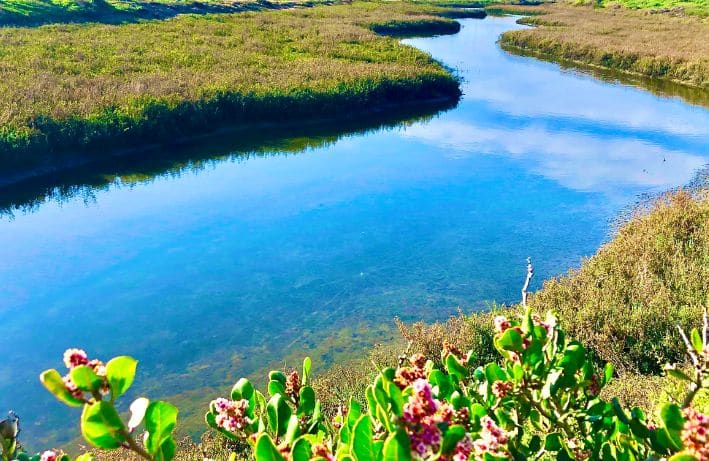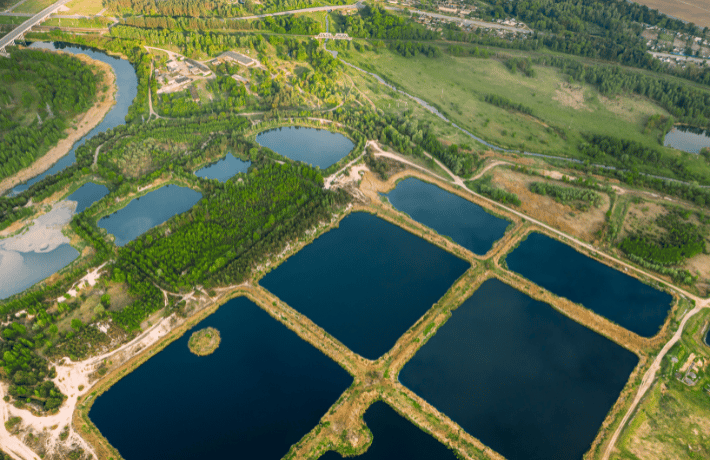Workshop Explores Benefits of Integrated Watershed Management Planning

The National Association of Wetland Managers (NAWM) and the Association of State Floodplain Managers (ASFPM), in partnership with the U.S. Environmental Protection Agency (EPA), are continuing into the second year of a training program focused on advancing the integration of natural hazard mitigation and Clean Water Act planning and implementation efforts to promote more resilient communities.
Funded by the EPA, the 2024 training will focus on states, Tribes, and local communities in the Southeast. It will be held Nov. 14-16, 2024 at the Guana Tolomato Matanzas (GTM) Research Reserve outside St. Augustine, Florida. Invitations for round two will go out in February. If you are interested in participating or would like to recommend a community in the Southeast for participation, go to no.floods.org/integratedplanning to learn more. A map of the states included in the Southeast cohort can be found on the above link. You’ll also find information on how to sign up for the workshop.
A recap from the first workshop
The 2023 workshop, organized by NAWM and ASFPM through an EPA cooperative agreement, was held Sept. 12-13 in Cincinnati, Ohio. Participants were invited in pairs — one clean water and one hazard mitigation professional — representing both state and local government agencies in the Great Lakes/Midwest area. The workshop drew a total of 17 attendees from Iowa, Minnesota, Illinois, Indiana, Ohio, and Kentucky.
The first day of the workshop focused on setting a baseline for participants through presentations and discussions centered around the intersections of clean water and hazard mitigation programs and the co-benefits that can be achieved through collaboration. Participants, presenters, and organizers began with a round of introductions and goal setting followed by a group share-out and recording on flip chart paper. Following introductions, representatives from NAWM, EPA, and FEMA presented on the importance of integration and partnering between programs and the efforts each organization is implementing to facilitate that cooperation. The morning finished with a facilitated discussion of how terms used in both clean water and hazard mitigation programs are defined. Facilitators shared standard definitions from the EPA that would be used for the remainder of the training and opened space for discussion of differing definitions between programs and in public perception.
The afternoon of the first day gave all participants baseline information of clean water and hazard mitigation programs to further build familiarity and foster collaboration. Invited speakers from American Rivers, Minnesota, and the EPA gave presentations on floodplains, wetlands, and green infrastructure, highlighting the benefits of implementing nature-based solutions in a watershed. This was followed by a panel of four hazard mitigation professionals, each representing a different level of governing structure: county, state, FEMA regional, and FEMA headquarters. The panelists discussed how their different agencies worked together and how integrated planning efforts could further common goals. The first day ended with small group discussions on identifying barriers and opportunities to collaboration in planning and implementation in their own work. Discussion questions included reflections on successes and challenges working between programs, government levels, and outside organizations as well as successes and challenges related to project funding and implementation.
The second day began with a tour of the Lick Run Greenway, a green infrastructure project implemented by the Metropolitan Sewer District of Greater Cincinnati. Participants learned about the project with special emphasis on project funding, community engagement, and the planning process. The greenway highlighted many of the possibilities for program co-benefits discussed the previous day, including reduced flood risk, cleaner water runoff filtered through vegetation, and increased green space for public recreation and well-being.
The afternoon focused on project planning considerations for implementing projects with co-benefits. Representatives from USACE gave a presentation on permitting requirements and regulations for water projects and fielded questions from participants. Speakers from FEMA and the EPA then gave presentations on federal funding for green infrastructure projects, specifically Hazard Mitigation Assistance (HMA) grants and the Clean Water State Revolving Fund (CWSRF). A practitioner with several active green infrastructure projects with states and communities, followed with a presentation on how to combine multiple funding sources and find innovative project funding sources. The final presentations were on benefit-cost analysis as a tool for project planning and as a requirement for securing project funding. NOAA presented on the traditional benefit-cost analyses as used by federal agencies and a representative from the Texas Water Board presented on ways to include equity considerations in analyses.
Participants ended the workshop breaking into small groups to work through a tabletop exercise scenario in which a municipality is interested in green infrastructure projects for stormwater runoff. Teams worked through several discussion questions regarding the planning and implementation process, including initial team building, public engagement, planning for natural function co-benefits, and securing funding sources. At the end of discussion, each group shared their major takeaways from the exercise and the training as a whole.
In post-workshop written evaluations, participants were excited for new collaboration opportunities inspired by the sessions with one person writing, “Definitely learned who are the key players that I need to connect with when I go home. This is very applicable to the work I am doing and we might even pause some things so we can work more closely with our HazMit partners.” Networking opportunities were highlighted as another major takeaway. “As always, the informal chats over coffee and lunch were the most valuable — thanks for setting time aside for those discussions,” wrote another participant. Of all the sessions, the presentations on floodplains, wetlands, and green infrastructure were identified as most useful, with many inspired by the introduction to the possibilities of using nature-based solutions. Seeing these solutions in action on the mobile tour and learning about various funding possibilities were identified as among the most helpful sessions.
Sign up for future workshops at no.floods.org/integratedplanning.



